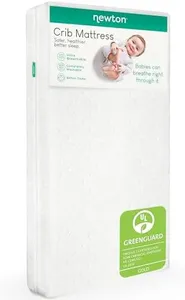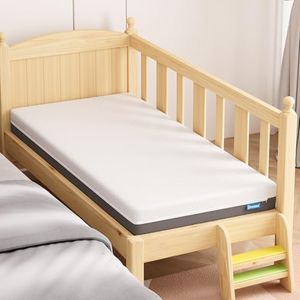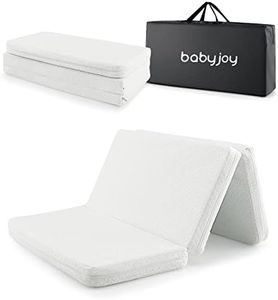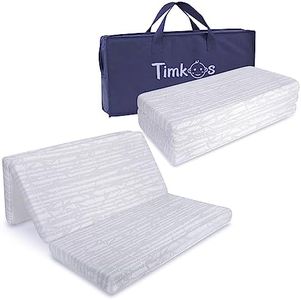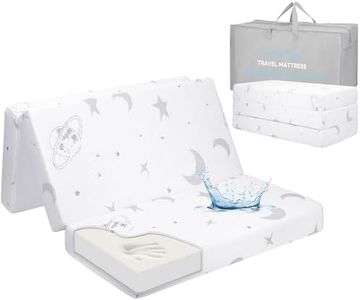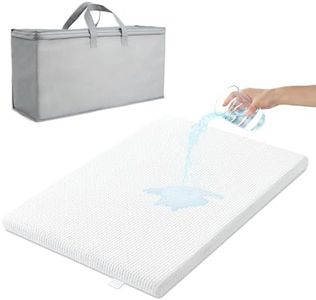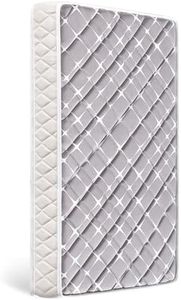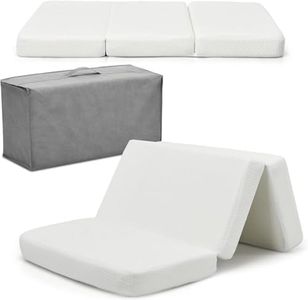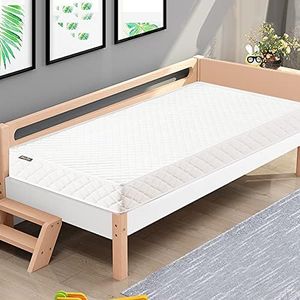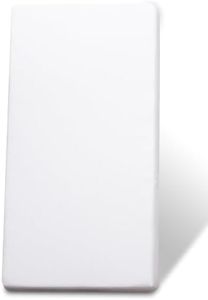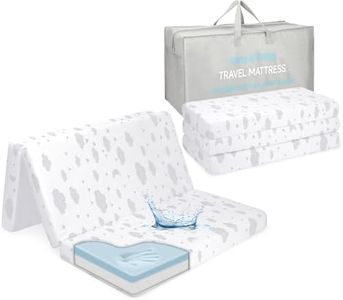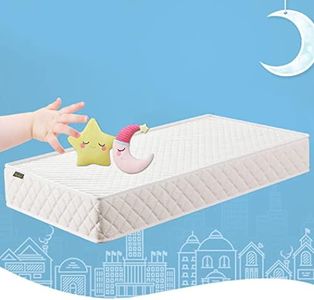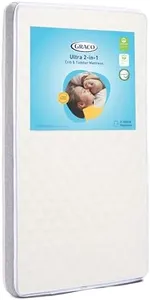We Use CookiesWe use cookies to enhance the security, performance,
functionality and for analytical and promotional activities. By continuing to browse this site you
are agreeing to our privacy policy
10 Best Crib Mattresses
From leading brands and best sellers available on the web.By clicking on a link to a third party's website, log data is shared with that third party.
Buying Guide for the Best Crib Mattresses
Choosing a crib mattress is an important decision for your baby's safety and comfort. It may seem like a simple item, but there are several factors that should guide your choice. The mattress will support your baby as they sleep and play, so you want something that is firm, safe, and fits well in the crib. Understanding the main features and their purposes can help you pick a mattress that fits your little one's needs and provides you peace of mind.FirmnessFirmness is a critical safety feature in crib mattresses because a surface that’s too soft can increase the risk of suffocation or Sudden Infant Death Syndrome (SIDS). Mattress firmness usually ranges from very firm to more cushiony; for infants, the firmer, the better. Newborns and young babies need a firm mattress to support their developing bones and prevent them from sinking in. When comparing mattresses, press on the center and edges to see how much they give—little to no give is best for infants. Some mattresses are dual-sided, with one firmer side for infants and a slightly softer side for toddlers. Make sure to match the firmness to your baby’s age and always opt for firmness for infants.
Size and FitSize and fit refer to how well the mattress fills the crib. A mattress that is too small can leave gaps where a baby might get stuck, posing a safety risk. Standard crib mattresses generally measure about 52 inches long and 28 inches wide, but crib sizes can vary. The key is for the mattress to fit snugly with no more than two fingers' width between the mattress and crib frame. Always measure your crib before shopping and check the mattress dimensions to ensure a safe and secure fit.
Material and ConstructionCrib mattresses are typically made from foam or innerspring coils, sometimes combined, and covered with various fabrics. Foam mattresses are lighter and easier to move, while innerspring mattresses tend to be heavier and may last longer. The choice depends on your preference for weight, durability, and price. Some mattresses also use organic or hypoallergenic materials, which are good if your baby has allergies or if you prefer natural materials. Picking the right material depends on whether you want easy handling, extra longevity, or hypoallergenic features.
Waterproofing and CoversWaterproofing is important because babies have accidents, spills, and leaks. A mattress with a waterproof cover or a removable waterproof layer will be easier to clean and maintain. Covers may be made from vinyl, plastic, or more breathable fabrics. If you want quick wipe-down cleanups, a built-in waterproof cover is useful. If you prefer softer or more natural materials, you might choose a mattress with a fabric cover and use a separate waterproof pad. Think about your cleaning preferences and how often you expect to change bedding when weighing this option.
BreathabilityBreathability refers to how well air can flow through the mattress. Good breathability can help regulate temperature and reduce the risk of overheating, which is important for infant safety. Some mattresses have special mesh or ventilated designs to increase airflow, while traditional solid foam or vinyl mattresses may not be as breathable. If you live in a hot climate or are particularly concerned about overheating, you might prioritize a breathable mattress. Otherwise, standard mattresses with a fitted sheet also work well, as long as the sleeping environment is kept cool and safe.
CertificationsCertifications show that a mattress has passed safety standards and is made without harmful chemicals. Look for reputable labels, such as those showing compliance with safety regulations or standards for low emissions. Common certifications might indicate the mattress is free from certain flame retardants, lead, or phthalates, or has passed third-party tests for chemical safety. These are especially important if your family values low-chemical environments or your baby has sensitivities.
